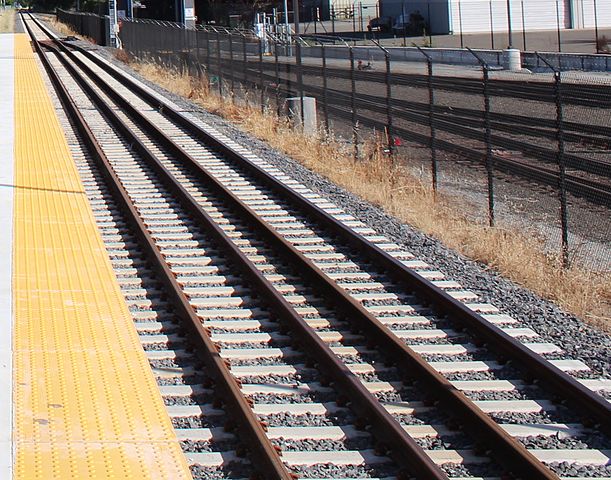What do you think isn't a done deal?
That REM has a green light from all concerned to use the Mount Royal Tunnel as claimed. I'm looking for an application to the CTA, have yet to find one.
https://otc-cta.gc.ca/eng/search/site/
Perhaps you could supply that? It might be in French, and mine is just barely passable, not good enough for search engines.
Many thanks for the link, and the translation. Until I can see some regulatory approval for what is planned for the tunnel, and by deduction, the loss of a functioning heavy rail line presumably but not necessarily still federally regulated, I remain unconvinced that the project can go ahead as stated. (Edit to Add: I highly suspect a flurry of discussion, and perhaps ultimatums, is going on behind closed doors)
"We are pleased that this important step in the choice of consortium has been made. We remain available to meet with the consortium to learn about their technical approach and together determine how to ensure access to VIA Rail's central train station on all sections "drawing on existing technologies from around the world, commented Ms. Diaby.
https://www.lesoleil.com/actualite/...-pour-le-tgf-b4a2d1a29042dfd280678ead72e4627a
I'm as intrigued by the "drawing on existing technologies from around the world" quote as I am other matters. She's absolutely right in many ways, not the least that solutions *at this time* don't exist in Canada. Not because they can't, but because they're being avoided.
What I really do like is that solutions will have to be found, and Ontario can benefit greatly from that, not least the necessary changes in regulatory sloth.
Étienne Grandmont, Executive Director of Sustainable Transportation Access, believes that the federal government must make tunnel interoperability a strict condition for EMF funding. Ottawa absorbs $ 1.3 billion of a total bill of $ 6.3 billion.
https://www.lesoleil.com/actualite/...-pour-le-tgf-b4a2d1a29042dfd280678ead72e4627a
As
@SamStar proffered a day or so back, as did I, this has to be one of the elephants behind the curtain. The reason for the 'sudden change of stance on the tunnel' wasn't down to altruism or just plain common and business sense. It was down to an ultimatum from the Feds. That might have been coupled with a threat to block an application to 'abandon' the present status of that route, the northern leg of which is still used for freight as well as heavy rail passenger.
I'm presently searching for the exact pertaining text in the various Acts and regs. Been quoted a number of times in this string, but the Feds have almost always looked the other way. In this case, with their own plans being impinged if not pizzed on while they pay a quarter of the cost....we'll see.
There's certainly going to be a lot more news to come on this...
Appendice: On the matter of jurisdiction of the the Mount Royal Tunnel:
Decision No. 273-R-2001
May 24, 2001
May 24, 2001
APPLICATION, as amended, filed jointly by the Agence métropolitaine de transport and Metropolitan Railways Inc., pursuant to section 91 of the Canada Transportation Act, S.C., 1996, c. 10, for a certificate of fitness to operate a commuter train service on the right of ways owned by the Canadian National Railway Company and the St. Lawrence & Hudson Railway Company Limited in the metropolitan region of Montréal, in the province of Quebec.
File No. R 8005/A3
APPLICATION
On June 6, 2000, the Agence métropolitaine de transport (hereinafter AMT) applied to the Canadian Transportation Agency (hereinafter the Agency) for a certificate of fitness to operate a commuter train service on the right of ways owned by the Canadian National Railway Company (hereinafter CN) and the St. Lawrence & Hudson Railway Company Limited (hereinafter CP) in the metropolitan region of Montréal, in the province of Quebec.
By Decision No. LET-R-201-2000 dated July 7, 2000, AMT was requested to provide further clarification concerning its eligibility to apply for a certificate of fitness pursuant to the Canada Transportation Act (hereinafter the CTA). At the same time, CN, CP, Transport Canada and the ministère des Transports of the Province of Quebec were requested to provide comments on the AMT application.
[...continues at length...]
https://www.otc-cta.gc.ca/eng/ruling/273-r-2001
Unless anyone can show a change of regulatory status since this decision, it seems clear that the Feds have full regulatory status of that line. That parts or all of it were acquired by AMT later will have produced no change in required regulatory status unless approved otherwise.
Btw: This decision has been discussed in circles since, much of it surrounding this paragraph:
[...]
By Decision No. LET-R-317-2000 dated October 30, 2000, the Agency solicited comments from provincial governments as well as provincial transit authorities and operators of specialty train services that operate on the lines of railways under the jurisdiction of the Parliament of Canada and that may be impacted by an Agency decision on the AMT/MRI application.
Submissions were received from the following interveners: Greater Toronto Transit Authority (hereinafter GO Transit), Edmonton Transit System, CN, Government of Alberta - Alberta Infrastructure, West Coast Express Limited (hereinafter WCE) and CP. [...]
Well, one wonders who'll show for the next Tunnel Party when the invites go out?
[...]
POSITIONS OF THE PARTIES
AMT
AMT states that all of the lines on which AMT currently operates its commuter train service and on which it is considering expanding this service belong to either CN or CP. As these lines fall under federal jurisdiction, AMT argues that the Agency has jurisdiction with respect to the present application.
According to AMT, CN and CP continue to operate their freight services on the same railway lines used for running AMT's commuter trains.
AMT points out that VIA Rail, a federal passenger railway company, operates several trains daily on the Saint-Hilaire line. AMT also maintains that the Agency has jurisdiction over passenger transportation services to ensure the implementation of the national transportation policy.
AMT states that, under these circumstances, the Agency, pursuant to the CTA, has jurisdiction over these lines, and hence has the right to recognize an agency that is operating services on these lines as a railway company.
AMT cites in support of its position the decision of the Supreme Court of Canada in Her Majesty The Queen in the Right of the Province of Ontario v. Board of Transport Commissioners (1968) S.C.R., 118 (hereinafter the GO Transit Decision), in which the Supreme Court of Canada recognized the Board of Transport Commissioners' (a predecessor of the Agency) jurisdiction over GO Transit. AMT states that the situation described in that decision does not differ from the one in which AMT finds itself today with respect to its operations on the railway infrastructure.
According to AMT, the GO Transit Decision establishes two things. The first is that a transportation undertaking operates a railway when it uses a railway to transport passengers, even if the railway as such belongs to another person. The second is that such a transportation undertaking becomes subject to federal jurisdiction as soon as it provides transportation on a railway that falls under federal jurisdiction, even if this undertaking transports passengers only within the boundaries of a single province.
AMT submits that the Supreme Court of Canada decided implicitly in the GO Transit Decision that the commuter service was subject to the jurisdiction of the Board of Transport Commissioners and the legislative authority of Parliament. AMT argues that it is hard to conceive how the jurisdiction over railway tariffs in that case for commuter train service could have been established unless the commuter service itself was considered a federal railway undertaking. Though it is not mentioned explicitly, AMT argues that the Supreme Court of Canada considered GO Transit a "federal railway undertaking" precisely because it was participating in the operation of a federal railway, which explains why it was subject to the federal railway regulations then applicable to such undertakings.
AMT believes that because it has the right to operate its commuter train service on lines that are subject to federal jurisdiction, it must apply to the Agency to obtain a certificate of fitness; AMT already has, and will continue to have after it has carried out its future plans, all the characteristics of a railway company, and the same will be true of MRI. Thus, AMT is entitled to apply for and be issued a certificate of fitness if the Agency is satisfied that AMT has the liability insurance specified by regulation, including acceptable self-insurance. In this respect, AMT states that it has such insurance, including self-insurance.
[...]
GO Transit
GO Transit asserts that AMT is not currently an operating railway company as it does not own any rail corridors in its own right, it does not maintain any track, nor does it dispatch or crew any trains. As such, GO Transit does not support the issuance of a certificate to AMT or MRI on jurisdictional grounds.
[...continues at great and detailed length...]
https://www.otc-cta.gc.ca/eng/ruling/273-r-2001
The final ruling was on the legal status of being a "Railway" or not for AMT. But what's of complete relevance immediately is what the ruling held as to the status of the line through the Tunnel and pertinence to other operators, GO Transit and VIA included.








